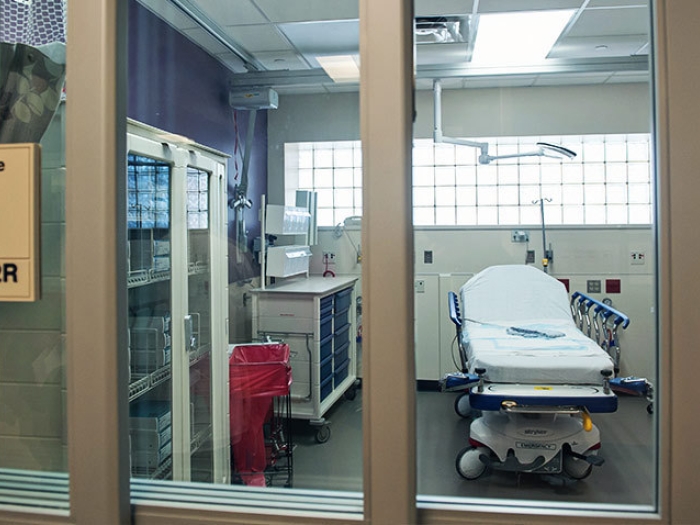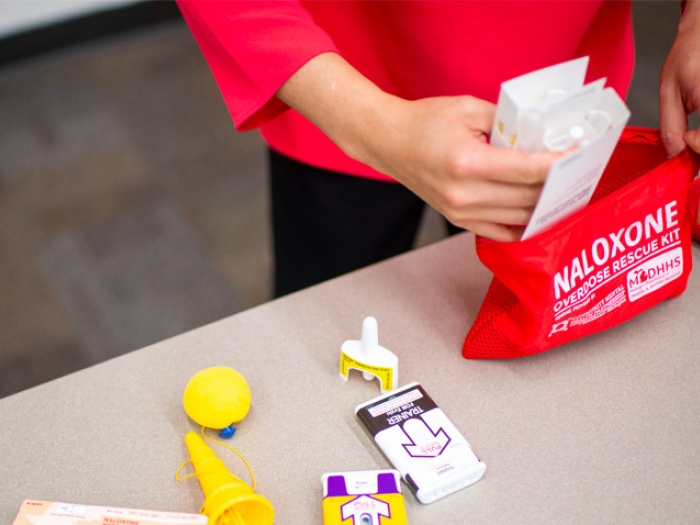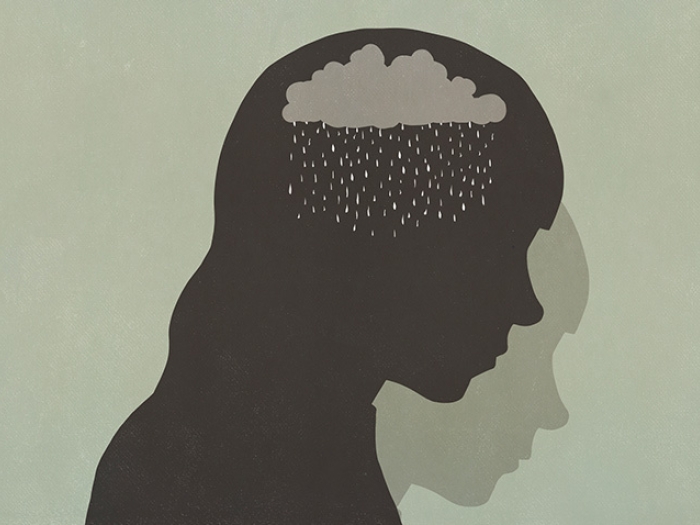A groundbreaking U-M study examines sexual violence and aggression among middle school and high school students.
7:00 AM
Author |

Adolescent sexual violence is a huge problem in the United States, affecting approximately 1 out of every 10 youth ages 17 and younger.
LISTEN UP: Add the new Michigan Medicine News Break to your Alexa-enabled device, or subscribe to our daily audio updates on iTunes, Google Play and Stitcher.
Despite its prevalence, social scientists have historically limited their research on sexual violence to that affecting young adults ages 18 to 22.
Seeking to broaden the scope, University of Michigan researchers examined data from a socioeconomically diverse sample of middle school and high school students in southeastern Michigan.
"Adolescence is a significant developmental period during which youths' sexual behaviors begin to emerge and sexual experimentation often occurs," says Quyen Ngo, Ph.D., L.P., a research assistant professor at the U-M Department of Emergency Medicine's Injury Prevention Center and the study's principal investigator.
Same-sex peer sexual violence
The study found that more than half of female adolescents and more than 1 in 3 males reported sexual violence victimization. At the same time, nearly 1 in 4 males and more than 1 in 10 females reported committing acts of sexual violence.
"Sexual violence" included both nonphysical and physical acts among victims and perpetrators, such as being stared at or teased in a sexual way or staring at or teasing someone else in a sexual way that leads to unwanted sexual intercourse.
SEE ALSO: Timely Interventions Help Spot Signs of Teen Dating Violence
Although the research found that sexual violence was primarily perpetrated by opposite-sex peers, 13.6 percent of respondents said they experienced same-sex peer sexual violence.
"Our goal was to expand the realm of research in this area because we knew that it could provide important clues regarding behavioral trajectories that can influence adolescent development well into adulthood," Ngo says. The study was funded by the Eunice Kennedy Shriver National Institute of Child Health and Human Development. Data for this project were collected by senior author Carol J. Boyd, Ph.D., R.N., in her Secondary Student Life Survey, funded by the National Institute on Drug Abuse.
Risk factors
The study revealed that both males and females reported connections between substance use, elevated symptoms of depression and risk of sexual violence. However, even though alcohol use is consistently linked to violence in young adults, there is little research connecting substance use to sexual violence in adolescents.
"It is important to acknowledge that the association between substance use and sexual violence is not meant to blame victims of sexual violence," Ngo says. "Instead, we want to inform prevention efforts aimed at addressing the risks associated with sexual violence.
MORE FROM MICHIGAN: Sign up for our weekly newsletter
"It is not clear whether the association between alcohol and sexual violence is related to alcohol use preceding or following incidents of sexual violence," she says.
Ngo and her team said the connection between adolescent depression and sexual violence is still unclear.
This observation comes in the wake of her study revealing that male and female respondents who identified as black, attended school in low socioeconomic school districts and reported clinically significant levels of depression or attention deficit hyperactivity disorder (ADHD) had higher odds of sexual victimization or sexual perpetration during the past year.
SEE ALSO: Why Screening for Social Determinants of Health Helps Doctors Provide Better Care
"We learned that there is an imperative need for preventative mechanisms for sexual violence in low-resource communities where youth are at a higher risk of experiencing sexual violence," Ngo says. "Prevention efforts specifically focused on school settings in these areas may be particularly helpful in protecting youth from this potentially life-shattering violence."
Additionally, the study identified several risk factors associated with sexual violence that differed by sex, including alcohol use disorders. Ngo and her co-authors at U-M's School of Nursing and Institute for Social Research, Yasamin Kusunoki, Ph.D., MPH, and Philip Veliz, Ph.D., found that more research is needed: "We would like to further study the connection between alcohol abuse, mental health and sexual violence in order to figure out how best to inform prevention efforts," Ngo says.
Overall, substance use, depression, ADHD and conduct disorder, which is characterized as a range of antisocial behavior in children and adolescents that can include aggression towards people or animals, were associated with peer-to-peer sexual violence victimization or perpetration for both males and females, with few differences in the patterns of associations by sex.
Other key findings
-
Females were more likely than males to have experienced either physical or nonphysical sexual victimization, while males were more likely than females to have sexually victimized someone in a physical or nonphysical manner.
-
Sexual victimization and perpetration typically occurred between individuals of the opposite sex. In the sample, 41.5 percent of adolescents reported opposite-sex victimization, 13.6 percent reported same-sex victimization, 14.4 percent reported opposite-sex perpetration and 6.4 percent reported same-sex perpetration.
-
The majority of both sexual victimization (41.1 percent) and perpetration (13.8 percent) was nonphysical over the four-year research period.
-
Female respondents who reported a clinically significant level of conduct disorder had higher odds of being sexually victimized and engaging in sexual perpetration during the past year. Moreover, female respondents who identified as "other race" had lower odds of being sexually victimized compared with their white female counterparts.
-
Female respondents in high school had lower odds of engaging in sexual perpetration compared with their female peers in middle school. Among male respondents, those in the 11th and 12th grades had lower odds of being sexually victimized or engaging in sexual perpetration than their male peers in the seventh and eighth grades. Further, male respondents who reported a clinically significant level of conduct disorder had greater odds of engaging in sexual perpetration.
"Even though this study is just a step in understanding adolescent sexual violence, it still presents a comprehensive examination of risk factors in terms of perpetration and victimization among both male and female youth," Ngo says. "It's really important to have conversations with young people, regardless of gender, about consent and the appropriate ways of interacting with each other. We hope that this research will serve as a starting point for more of these conversations."
Read more about Ngo and her team's work here.

Explore a variety of healthcare news & stories by visiting the Health Lab home page for more articles.

Department of Communication at Michigan Medicine
Want top health & research news weekly? Sign up for Health Lab’s newsletters today!





